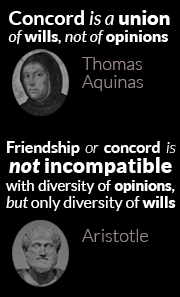Obama: a rather normal election
There’s much to learn from the outcome and conduct of the recent US presidential election. But this viral election was surprisingly normal in its arithmetic.
Getting over-heated, one of Europe’s leading PRs – Weber Shandwick’s Colin Byrne – has enthused:
Obama’s campaign focused heavily on the personal touch, making its theme all about “you” and not “I”. As a direct result of this empowering message over 3 million people were compelled to make personal donations to ‘team Obama’, many of whom gave less than $100. This powerful personalisation mobilised the masses, creating active advocates who were willing to help deliver the message and get out the vote. John McCain, who claimed not to use the ‘net’, subsequently lost a large majority of the under 30 vote.
There is no doubt Obama groomed millions of already-onside voters with texting, YouTube and Face Book communication. Oh alright, “groomed” is too loaded a word. How about schmoozed? Or wooed? But when Byrne talks of mobilising the masses, a quick look at the election results suggests that Obama made little impact on the overall electorate. Sounds an outrageous claim? Well here’re some facts:
Rather remarkably, too, voter turnout did not massively increase, either as the result of the charismatic Obama luring youth and ethnic minorities into the ballot box, or for any other reason. About 126 million people voted for President on November 4. In 2004, when the uncharismatic George W. Bush and John Kerry faced off, about 121.4 million people voted. Given America’s population increase in four years, turnout in 2008 was quite possibly below that in 2004. [Editor’s note: The point made is correct, but these figures might not be exact. Wikipedia reports around 129 million voted in 2008, compared to 122.3 million in 2004, which was the previous numerical record. However the turnout percentage was not a record in 2008, and was below 1960, for instance. One has also to consider the total eligible population to vote, voter registrations, and actual votes. Moreover, Lyndon Johnson (in 1964 against Barry Goldwater), Richard Nixon (in 1972 against George McGovern), and Ronald Reagan (in 1984 against Walter Mondale) each received about 60 per cent of the total Presidential vote, far higher than Obama’s share.]
Nor did the election reflect any basic social or demographic changes in America’s population mix, as has been widely suggested. The percentage of Afro-Americans in the total population of the United States is the same today as ten, thirty, or sixty years ago: about 11 per cent. More might well have voted for a black candidate than in the past, but 90 per cent of American blacks always vote Democratic. There are more Hispanics and Asians than before, but most American Hispanics are stable Spanish-speaking Caucasians from Mexico, whose grandchildren will be indistinguishable from the rest of the white population, while most Asians are upwardly mobile Chinese, Indians, and Japanese who were as likely to vote for McCain. A visible portion of the “youth vote” campaigned for Obama, but at what election in modern times has there not been a highly visible left-liberal contingent of young activists?
Moreover, McCain in many ways was more reliant on the internet to get his message out than was Obama. McCain, unlike Obama, could not afford to buy up prime-TV to transmit his adverts. He was forced to release many of them purely over the Web instead.
Another counter-intuitive breakdown of the election results reveals the following:
Barack Obama did not win the presidency because white voters have discovered racial tolerance but because there just ain’t enough of them any more.
43% of whites voted for Obama and 55% for McCain. A mere 34 percent of white Protestants voted for Obama, while 65 percent went with McCain. In other words, if only whites could vote, Obama would have lost in a landslide.
Eight years ago, 42% of whites voted for Gore and 54% for Bush: virtually no change! Despite an economy in ruins and the worst president in US history, Obama made virtually no headway among whites. Now contrast this with Bill Clinton. Although running against a war-winning incumbent in only a mild economic downturn, Clinton split the white vote 50-50, whereas Obama lost it decisively. With the Perot distortion almost gone in ’96, Clinton again split the white vote almost evenly.
All nonwhite groups and Latinos voted for Obama by huge margins: Blacks (95%), Asians (62%), and Latinos (67%). Obama’s gains among nonwhites coincided with a shrinking of the white electorate. Here are the percentages:
Clinton-Bush: 83%
Gore-Bush: 81%
Kerry-Bush: 77%
Obama-McCain: 74%
Samuel Huntington‘s nightmare is becoming reality. A nonwhite won because there were not enough whites to stop him. At long last.
The internet is a fact of life. It has changed things. But we still need to keep a grip if we are to understand exactly what has changed and how we should adjust PR strategies accordingly.

[…] push backs. The role of the internet in securing President Barack Obama’s election has been much exaggerated and his online presence since has been top down rather than bottom up or flat. In the UK, the […]